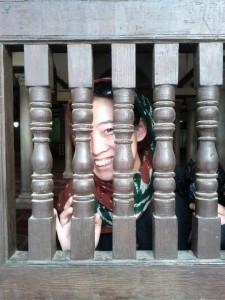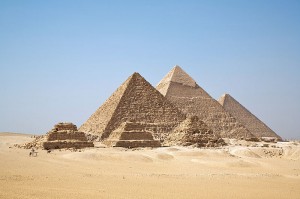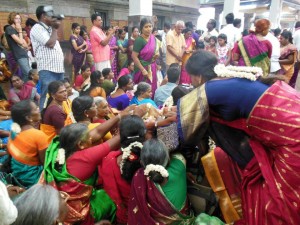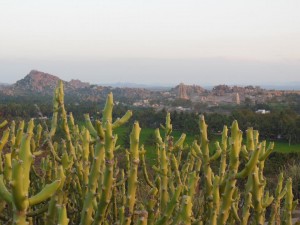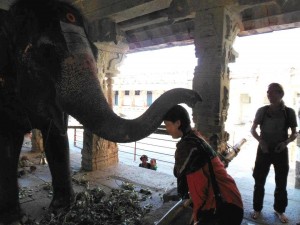Nobuko has been sharing her experience about travels to Cairo, Luxor, and now Assiyut and the Dakhla Oasis. See what she has to say.
Part 1: Getting from Cairo to Luxor
Getting from Cairo to Luxor was a breeze – but at $60 per bed, it is not cheap. The tourist sleeper train, which leaves from Giza station, was very comfortable with small 2-bed cabins that included clean sheets, a pillow and blanket, and a basin. Also included in the price were a pretty hearty dinner and breakfast which was served in your cabin. I shared the cabin with a Samoan woman who is a New Zealand citizen. She was also traveling alone for one year so we had much to talk about. The whole trip took 10 hours.
Part 2: Getting from Luxor to the Dakhla Oasis
Now, the transit from Luxor to the western Dakhla Oasis was an arduous one. It took me 16 hours to arrive there via Assiyut (more about that train route on TripAdvisor). I took a local train at 7:30am (cost less than 20 E pounds) which arrived in Assiyut at 1:30pm after enduring an incredibly dusty path. There was only one car for first class, but there aren’t any noticeable differences between first and second class.
I met a group of four female college students who kept me company by teaching me Arabic. I remember only one word from this lesson, which is magnun = crazy. After they got off, other women filled their seats. But these women made me feel uncomfortable by continious laughing at the sight of me. I think the laughter was not malicious, but I left to move to another seat.
Assiyut is a large city. But the bus station is only a five-minute walk to the left from the train station. The direct bus to Dakhla did not leave til 6pm, so I decided to take the bus at 3pm to the Khagra Oasis which is located two hours before reaching Dakhla. My plan was to take another bus from Kharga to Dakhla. The ride to Kharga was hot but smooth, arriving at 6:30pm. But the onward bus from there did not leave til 8:30pm – which meant I would not arrive in Dakhla til 11:30! By this time I was simply exhausted, so when I learned this I was going to look for an accommodation in Kharga.
I do not speak Arabic. There were many instances where I really wished that I had studied some words. But there is always someone who speaks some English and offers me much needed help. A group of college girls got me in a taxi with them, and I was taken to a micro bus headed to Dakhla. During the travel, they fed me and gave me drinks. When we reached Dakhla, one of them gave me a ride to an accommodation in her boyfriend’s car. So I was in bed before 10:30pm.
The travel route I had taken I would not recommend to anyone. But unfortunately, there aren’t many other options unless one has $130 to spend on a five-hour taxi ride from Luxor to Dakhla.
Dakhla itself does not have any sites. 30km away from it, there is Al Qasr, an abandoned medieval fort city made of mud and bricks which served as the capital for the area for a long time. It’s a surreal experience to walk through the maze of small streets in this ghost town. Some multi-storied houses are more than 1200 years old and still standing in good enough condition for us to walk in. The wood of Acacia trees was used for constructions and for city gates for its durability. To make it extra strong and preservable, it was soaked in salt water first. As a testament, none of the acacia trees were crumbling. Amazing!Acacia wood was also used for curving the prayer areas which decorate the doorway of the houses. These prayer boards record the dates when the house was built and the names of the artists who curved the boards.
The whole city was designed to remain cool in the hot desert climate by making narrow streets which created much shaded areas. The narrow and bending streets also served as a defense tactic to prevent invaders from marching into the city with high velocity and momentum.
Aside from Al Qasr, the Dakhla Oasis was supposed to be famous for its hot springs. However, these are cemented structures with pumps that pour spring water into the pools. And due to the prolonged decline in tourism over the past few years, the pools had moss growing inside and some pumps were not operating. So my dream of getting into natural hot springs were miserably shattered.
The hotel staff were very nice people, but they did not speak English. This was a problem apart from getting breakfast and getting a wi-fi password. I could not get a map or contact information for the tourist office in town because they did not understand what I was asking for. I aimlessly wandered the streets looking for the tourist information office. Someone picked me up and drove me to the tourist police office. Probably they didn’t know what else to do with me. There finally I met the officer Mr. Mahmud, who spoke English. He gave me some tea and a snack, and called the tourist office on my behalf. With directions in my hand, I headed to the tourist office, but got lost within a few minutes.
Mr. Mahmud probably figured that I would get lost, so he came after me and drove me to my destination. There I met Mr. Omar Dahi who agreed to guide me to Al Qasr. But I admit, it was so much fun to ride in police cars! Now I understand why cops are one of the most popular attraction among the elementary school kids on career day!
Dakhla Oasis, also spelt Dakhleh and translates to the inner oasis, is one of the seven oases of Egypt’s Western Desert. Dakhla Oasis lies in the New Valley Governorate, 350 km from the Nile and between the oases of Farafra and Kharga. (source: Wikipedia)
